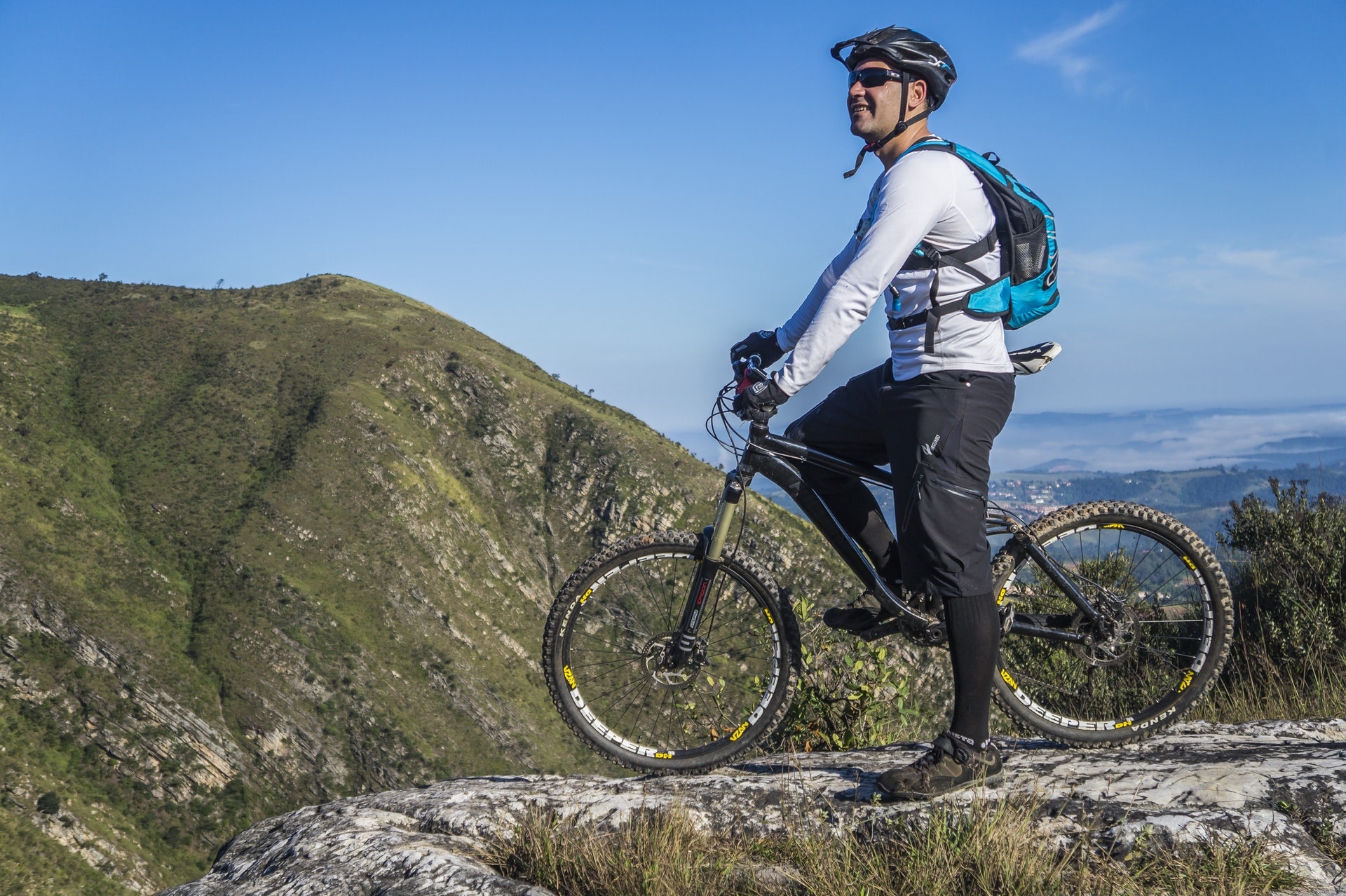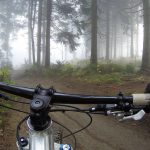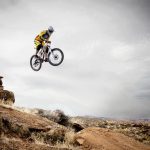So you got your new mountain bike and you’re ready to saddle up and hit the trails?
Well, before you grab and bike and go, there are a few things you’ll want to have on hand so that you’re ready for any situation. I’ve listed the 12 essential mountain biking gear items that you’ll need so that you can enjoy your rides.
Before I get into the items, I’ll assume that you already picked the right size mountain bike and this is just filling out the must-have items to ensure you have a good time. Some of these items I go into more detail in my post on what mountain bike clothing you truly need as well.
So without further ado, here is my list for beginner mountain bike riders and what you will need for your rides.
Helmet
Your helmet is the single most important piece of biking gear that you can bring with you. I get asked frequently “Is Mountain Biking Dangerous” and the question to that is it depends. If you wear the proper safety gear then it is safer than playing sports like football and baseball.
A quality helmet can reduce head injuries by 39% and facial trauma by 28%.
Most head injuries happen when the front tire doesn’t clear an obstacle like a downed tree and the rider goes over the handlebars. Going head-first it’s not hard to imagine headbutting a rock or a tree. So just wear a quality helmet like this one on Amazon for $35.99 and save yourself a trip to the emergency room.
I’ve also put together a post on what mountain bike helmets pass the Consumer Product Safety Commission (CPSC) tests in the US so you can be sure you choose one of the best helmets to protect your head from damage. This is tough for the average person to check on testing and such for each helmet, so I listed the top bike helmets under $100 that far exceed Federal Safety Standards and what makes each one among the top choices.
Your bike helmet needs will vary depending on the type of riding you will do. Trail riders may use regular helmets, but downhill mountain bike riders may opt for a full face helmet.
Protective Glasses
Protecting your eyes is another really big safety item. You’re going to ride through mountain bike trails that have sticks or other objects in your way at head level. In order to keep from being poked in the eye, you’ll want some decent protective glasses.
Many pairs like this one on Amazon are only $20 and they are protective, polarized for easy viewing, and unbreakable.
I’ve also put together a few posts on finding the right cycling glasses. I have a post on the best cycling glasses and also another one on the best night cycling glasses.
Riding Gloves
If you go down while riding, likely you’l put your hands out and hit them first. Getting riding gloves to protect your hands from scrapes is another key gear item. I would recommend to all mountain biking beginners to get gloves since I can tell you from experience that when riding near trees you inadvertently catch a branch or even a whole tree with the handlebars from time to time.
Well-made mountain bike gloves will be full-fingered, padded, and non-slip. You can get high-quality gloves for under $10 locally at places like REI or online like this pair of gloves on Amazon.
Riding Shorts
While not a very obvious thing, having mountain biking riding shorts can make your ride far more enjoyable.
What makes riding shorts different than normal shorts? The main difference is that they are padded to make the ride a little easier.
If you are really up for it, you can actually get a riding jersey which will evaporate sweat much easier and help to keep you cooler on the ride. Many mountain bikers don’t start with a jersey but work their way to it once the more safety-oriented gear is purchased.
Riding Shoes
While you can wear just about any shoes, good mountain bike shoes will give you some serious advantages. If you don’t have clipless pedals to hold your feet to the pedals, then you’ll want high-friction shoes to give you enough grip on regular pedals. Personally I recommend Five Ten Freerider shoes like these on Amazon. They are around $90-145 but they are worth every penny. They stick to the pedals like glue when you put your weight on them.
You get the ability to bail out with regular pedals but you get amazing grip. The best of both worlds.
Biking shoes are important enough in fact that I wrote up an article on biking shoes and the different types and where they are used to help make this easier. Afterall, your shoes are what is keeping you on the bike pedals so you stay steady and transfer power to wheels. So choosing the right shoes can make a big difference in your biking experience.
Repair Kit
In the basic repair kit, you’ll need several things:
- A multi tool to tighten bolts
- A mini high pressure air pump
- Tire tube patches
- A useful case. Many will mount and hang just below the seat.
- One or two bike tire pry rods
Hopefully you won’t need these, but if you have mechanical issues or a flat you’ll be glad you have a way to fix it and keep on going. This bike repair kit on Amazon has everything you need for those mechanical issues.
You never know what you might encounter while out on the trails, from a flat tire to skipping gears, but you’ll always be glad you brought your repair kit. Even the best mountain bikes can have parts break and it’s best to be prepared rather than stranded.
First-Aid Kit
Getting hurt far away from medical services could spell trouble. Take the smart route and bring a small first-aid kit that has the essentials to deal with any issues that arise. You’ll want bandages, anti-septic wipes, cotton gauze, tweezers, and a whistle. The whistle is one of those little things that can make a world of difference if you need assistance. Whistles can be heard far further away than yelling for help and it also conserves your energy.
This first-aid kit on Amazon has everything above and more at under 1 lb.
Hydration Backpack
Staying hydrated is a must-have for mountain biking. If you become dehydrated, your energy level will drop and of course when you get tired is when accidents can happen.
With a hydration backpack, you can have the water line near you to take a drink whenever you need it. It still has the backpack part to carry a first-aid kit, snacks, and the repair kit.
You could really just bring a backpack and put water bottles in it. As long as you have hydration you’ll be good to go.
Snacks
In keeping up your energy, snacks are a necessity especially when you are out riding for hours. I go with a few CLIF bars in the backpack for wholesome snacks that are great for energy. No mess, nice and easy.
Duck Tape and Zip Ties
These are really two different items but they are going to be used for the same thing. Between zip ties and duck tape you can tie down cables, tape on a hand brake, or even replace a broken shoe lace. Between these two items you can rig almost anything to work to get you to the bottom of the hill.
Cell Phone
While we probably would bring our cell phone anyways, it’s worth a specific mention. Having a cell phone to either call for help or possibly even bring up the maps to see where you are with gps is absolutely necessary.
Other Things Not Specifically Mentioned
I put what I consider the essentials in the list, things you absolutely have to have with you. That being said, there are many things you would also want to bring with you just to make life a little nicer. Bringing a rain jacket that is portable and light might only become a necessary item if you’re riding in colder weather. Bringing an LED light can sure be handy if you’re still riding while it gets dark or you have to fix something in the dark on your bike. Sunscreen can be a good way to avoid sunburn but it’s still a nice-to-have instead of a must-have.
For a more thorough list of things to bring with you when you already have the bike and safety gear handled, check out my article on what to bring with you.
Just get a good sturdy backpack to fit these things in and you’ll be ready to safely tackle the mountain. If you are getting ready to mountain bike for the first time, you may have to pick up a good few things on the list here, but focus first on the safety items.
With the correct gear, mountain bike riding can be lots of fun and safe to enjoy. Just make a mountain gear checklist from my items above and you’ll be well on your way to great rides.






